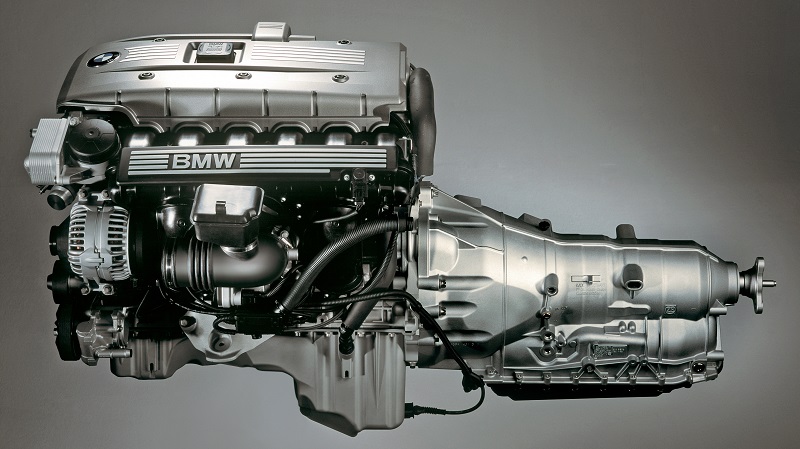SAV stands for a Sports Activity Vehicle and is a term used by BMW to address their SUV models. The BMW X1 is the entry model to the world of BMW SAVs and was first introduced in 2009.
BMW claims that the X1 is perfect for covering long distances, offers great practicality, and is never boring. Does this base model really stand up to BMW’s claims? Read along and find out everything about the model’s history, reliability, and qualities but also its shortfalls.
Three Generations of the Base BMW X Model
Being a newer X model, the BMW X1 has only had 3 evolution cycles so far. Each generation brought something new in terms of engines, interiors, and overall performance. Here’s a quick rundown of what each X1 has to offer.
First Generation (E84; 2009 – 2015)

The BMW X1 was first seen in 2008 and entered production a year later. However, it only got to the US market in the middle of its production in 2012. It was based on the 3 Series E90, with which it shares the platform. The fact that it offered rear-wheel drive made it a quite promising offer that could really fit the SAV designation. Not many other cars in this segment sent power to the rear wheels. With that said, it was also available with BMW’s all-wheel drive xDrive layout with a 40/60 rear bias.
In Europe, it was offered with more than 10 drivetrain options including both petrol and diesel engines. In the USA, the offer was narrowed down to three options. The base offering was the sDrive28i featuring a 2.0-liter N20 turbocharged engine capable of delivering 240 hp and 260 lb.-ft of torque exclusively to the rear wheels.
As a step-up, you could get an identical engine paired to xDrive all-wheel drive. The top model was then the xDrive35i. This was the only way of getting the X1 with an inline six-cylinder. The mighty 3.0-liter turbocharged N55 gave the X1 300 hp and 300 lb.-ft of torque, which allowed it to accelerate from 0-60 mph in close to five seconds. Even back then, a six-cylinder in such a compact vehicle was rather unusual, and today, it is even more impressive. As standard, all X1s came with an automatic transmission.
BMW claims that the X1 is a practical car, but the longitudinally mounted engines take away some of the interior space, which isn’t tremendous, to begin with, Yet, we have to take into account the car’s dimensions. With a boot that offers 14.8 cu-ft of cargo volume, it’s still well within the limits of daily practicality.
Despite being the entry model to SAVs, the BMW X1 came equipped with features such as dual-zone climate control and parking sensors as standard. Optionally, it was possible to equip the X1 with a navigation system, electrically operated and heated front seats, dynamic cruise control, and a Harman Kardon sound system.
Second Generation (F48; 2015 – 2022)
Improving on the qualities of its predecessor, the F48 BMW X1 took on the challenge of outperforming the 820,000 units sold by the first-generation model. To do so, it has arguably repositioned itself as a more family-friendly, economic model. Gone is the rear-wheel drive platform and the powerful six-cylinder drivetrain, and the dimensions have also been readjusted. The second generation of the X1 has transitioned to a front-wheel-drive platform with xDrive remaining optional.

Powered by a 2.0-liter TwinPower turbo four-cylinder B48 engine, the second generation X1 is still powerful enough with 228 hp and 258 lb.-ft. While some customers might miss the N55 engine offering, B48 simply makes more sense in this compact family SAV. 0-60 time of 6.3 seconds is more than respectable and at the same time, the engine delivers great fuel economy. As standard, it is equipped with an 8-speed Steptronic transmission.
An important aspect of this model has been its practicality, and while at the first glance it might seem like a downgrade from the first generation, BMW engineers have actually done a superb job in improving the practicality by quite a lot. The new UKL2 platform, which was also shared with MINI, has resulted in a wheelbase that’s shorter by 3.5 inches. Despite that, the new interior offered more legroom, headroom, and shoulder room. The dismissal of 6-cylinder engines and rear-wheel drive has allowed the engineers to save quite a lot of space.
While the first generation did not look bad, the second generation is a major improvement in this regard. The predecessor was criticized for some controversial design elements and the new F48 generation looks smarter, yet stylish.
In the end, the F48 generation succeeded in its task and made the BMW X lineup even more popular, outselling the first generation by 470 thousand units for a total of 1,290,113 units sold.
Third Generation (U11; 2022 – today)

Revealed only recently, the third generation of the X1 has been at BMW dealerships for only a few months. This time, the model has not repositioned itself significantly, and it has mostly just tried to improve the qualities already present in the second generation.
Just like the F48 generation, even this model is available with only one powertrain labeled xDrive28i. You’re still getting a 2.0-liter TwinPower Turbo B48 four-cylinder but with a few changes this time around. It now produces 241 hp and 295 lb.-ft of torque. This ensures a 0-60 mph time of 6.2 seconds and 25/34 MPG in city/highway use. This time, xDrive comes as standard together with a 7-speed Steptronic automatic gearbox. Going in the trend of electrification, the model is also available as an all-electric iX1 on overseas markets.
The generational step is the most apparent with the latest generation. In recent years, BMW has done an immense job preparing the models for a transition to a fully-electric future and digitalizing the entire model lineup. The X1 now has an interior similar to the electric models and the newest 3 Series.
This has resulted in two large LCD panels (a 10.25-inch digital gauge cluster and a 10.7-inch infotainment screen) in front of the driver and a significant reduction of physical buttons. The interior has been really simplified, but it appears more luxurious than before. The same can be said about the exterior, which is now much sleeker, more aerodynamic, yet aggressive looking. In no way do the looks suggest the X1 is an entry-level model.
The exterior dimensions have changed slightly; +1.7 inches in length, +0.9 inches in width, and +1.7 inches in height. This, once again, allowed the engineers to create more space in the interior. The increase in space is the most apparent in the boot, where the X1 now has 19 cu.-ft of volume. This is a huge improvement and makes this BMW SAV a true family vehicle.
Is the BMW X1 a Good SAV?
With everything said above, it’s clear that the X1 series had to cut a few corners here and there to fit BMW’s compact SAV idea. Yet, the X1 has proven to be more than capable when it comes to delivering the core SAV experience. However, there is still a lot to unveil, including driving abilities, reliability, and comfort. How does the X1 stand in this regard?
In short, the BMW X1 does not disappoint in either one of the aspects. As far as driving abilities go, all three generations are good in their own way. The first generation used a rear-wheel drive platform in combination with an optional six-cylinder engine with 300 horsepower.
This made it a surprisingly nimble vehicle and a clear choice for petrolheads, it might actually be the ideal candidate for a sensible daily with a little bit of fun twist to it. Of course, it is still a raised-up subcompact car, so it won’t handle as well as the 3 Series, on which the first generation was based. That said, the increased ride height gives you a slight edge in usability in tougher conditions. Overall, the first generation is an appealing choice!
When looking at the driving characteristics of the second generation, it is much more reserved and fuel economy-focused. The second generation is nothing special in terms of driving but for a large number of people, this is exactly what they want. The latest model then goes in the trend of the second generation but makes the drive even more comfortable, subtle, and relaxed, with the option to enjoy a more spirited drive in the sports mode as well.
In terms of comfort, the progression between generations is exactly what you’d expect it to be — the newer the car, the more comfortable it is. By today’s standards, the E84 generation might be a bit too stiff from the suspension (a trade-off for the sporty handling) and a bit noisy at higher speeds compared to newer models but in line with the competition at the time.
The second generation tried to improve the ride quality which resulted in a much more comfortable ride. The third generation then stands somewhere in between the two but is far more versatile with adaptive dampers that can quickly transform it from very comfortable to quite stiff and sporty.
What about reliability? The first generation had by far the most complaints. Although still in line with the competition, it had issues with the cooling system leaks, air conditioning, and engine mounts. None of these are dealbreakers. You could say that the E84 X1 is average in terms of reliability. The second generation did not face any major issues either, but we have yet to see what the third generation brings.
Overall, there are not a lot of bad things you could say about the BMW X1. It really is a decent SAV and a great entry to the world of BMW X models. It might even steal sales from the larger X3, which it feels surprisingly close to, especially in the latest generation with all the extra modern and luxurious elements.
Even an Entry Model Can Fulfill Your Needs
Even though the BMW X1 is the base model of the SAV lineup, it still has undeniable qualities. It underwent a large transformation since its first generation, which was certainly better at meeting the “Sport” aspect of the SAV acronym. However, the later models are now excelling in the practicality and “Activity” aspect. You will not be disappointed by going with the BMW X1 in any of its generations.





